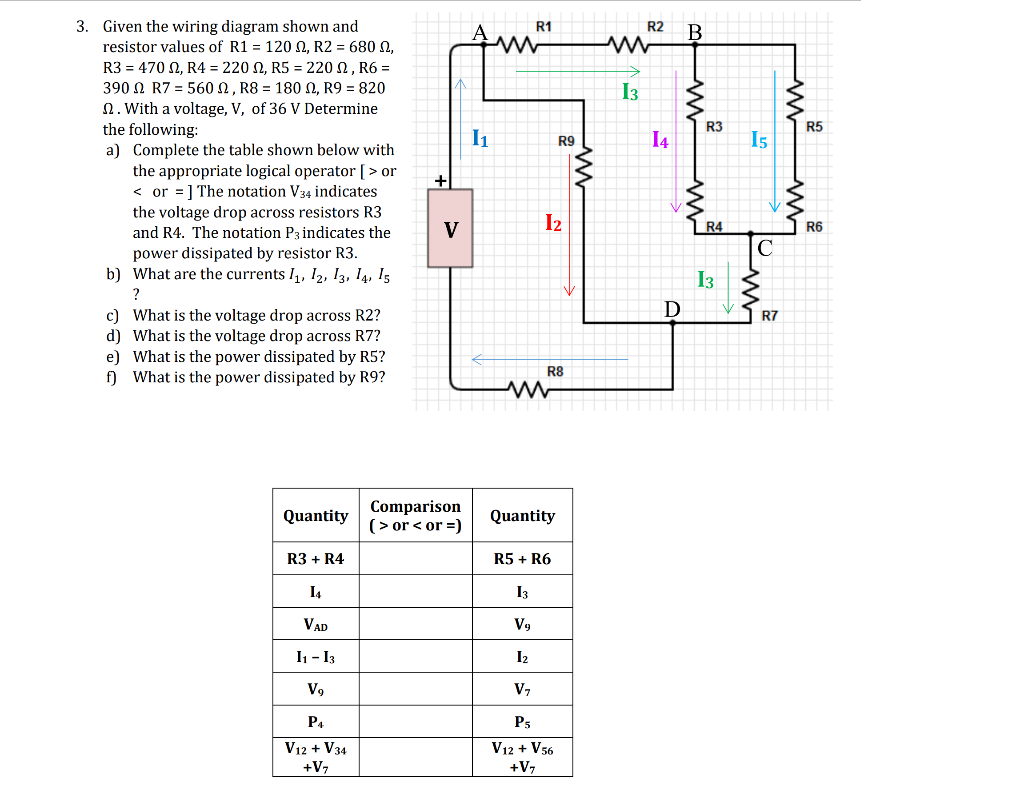Home /
Expert Answers /
Electrical Engineering /
given-the-wiring-diagram-shown-and-resistor-values-of-mathrm-r-1-120-omega-mathrm-r-2-680-pa529
(Solved): Given the wiring diagram shown and resistor values of \( \mathrm{R} 1=120 \Omega, \mathrm{R} 2=680 ...
Given the wiring diagram shown and resistor values of \( \mathrm{R} 1=120 \Omega, \mathrm{R} 2=680 \Omega \), \( \mathrm{R} 3=470 \Omega, \mathrm{R} 4=220 \Omega \), R5 \( =220 \Omega \), R6 = \( 390 \Omega \mathrm{R} 7=560 \Omega, \mathrm{R} 8=180 \Omega, \mathrm{R} 9=820 \) \( \Omega \). With a voltage, \( \mathrm{V} \), of \( 36 \mathrm{~V} \) Determine the following: a) Complete the table shown below with the appropriate logical operator [ \( > \) or \( < \) or \( = \) ] The notation \( V_{34} \) indicates the voltage drop across resistors \( \mathrm{R} 3 \) and R4. The notation \( P_{3} \) indicates the power dissipated by resistor \( \mathrm{R} 3 \). b) What are the currents \( I_{1}, I_{2}, I_{3}, I_{4}, I_{5} \) ? c) What is the voltage drop across R2? d) What is the voltage drop across R7? e) What is the power dissipated by R5? f) What is the power dissipated by R9?
